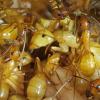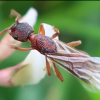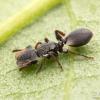Hi all,
As I am getting into the hobby and am really loving it, I have stumbled upon some discussions about plastics and ant keeping.
I have seen many plastic formicaria (e.g., AntsCanada hybrid nests, as well as 3D printed ones, as well as plastic nests and outworlds from other companies). Further, I stumbled upon one warning that vinyl aquarium hose or tubing is fatal to one species (Veromessor pergandei, I believe). Elsewhere, I have been totally intrigued with some ant keepers' videos of leafcutter ants in an array of clear tubes (and gray plastic elbow connectors) mounted on a wall, marching in very long clear tubes. Of course acrylic is used too in other setups. One of my colonies was sold to me in Tupperware tub, and the ants seemed fine.
I am curious of some species are sensitive to some types of plastics, or if some materials are better than others.
As my any keeping skills improve, I daydream of some day setting up a colony of diurnally active ants in my classroom, one that incorporates a wall-mounted tube for marching and foraging. I'm not ready yet, of course, but it would be pretty cool for my science students to be able to make observations on behavior, estimate population size, etc., and not have to be clustered around one small formicarium.
The other day I picked up a polycarbonate food tray (the ones used at sandwich shops like Subway) from a local restaurant supply place, thinking the dense and very clear plastic was inert, if food grade, but noticed there was a Prop., 65 warning that the polycarbonate contains BPA. I still may give the container a try if one of my colonies grows to the point of being able to be split. The polycarbonate is a little more rigid and much more clear then Tupperware and inexpensive reusable plastic containers found at local grocery stores.
Anyway, thank you for any input on the matter.























![AliBaba [sic] and formicaria: a beneficial match? - last post by mantisgal](https://www.formiculture.com/uploads/profile/photo-5998.jpg?_r=1618102749)



